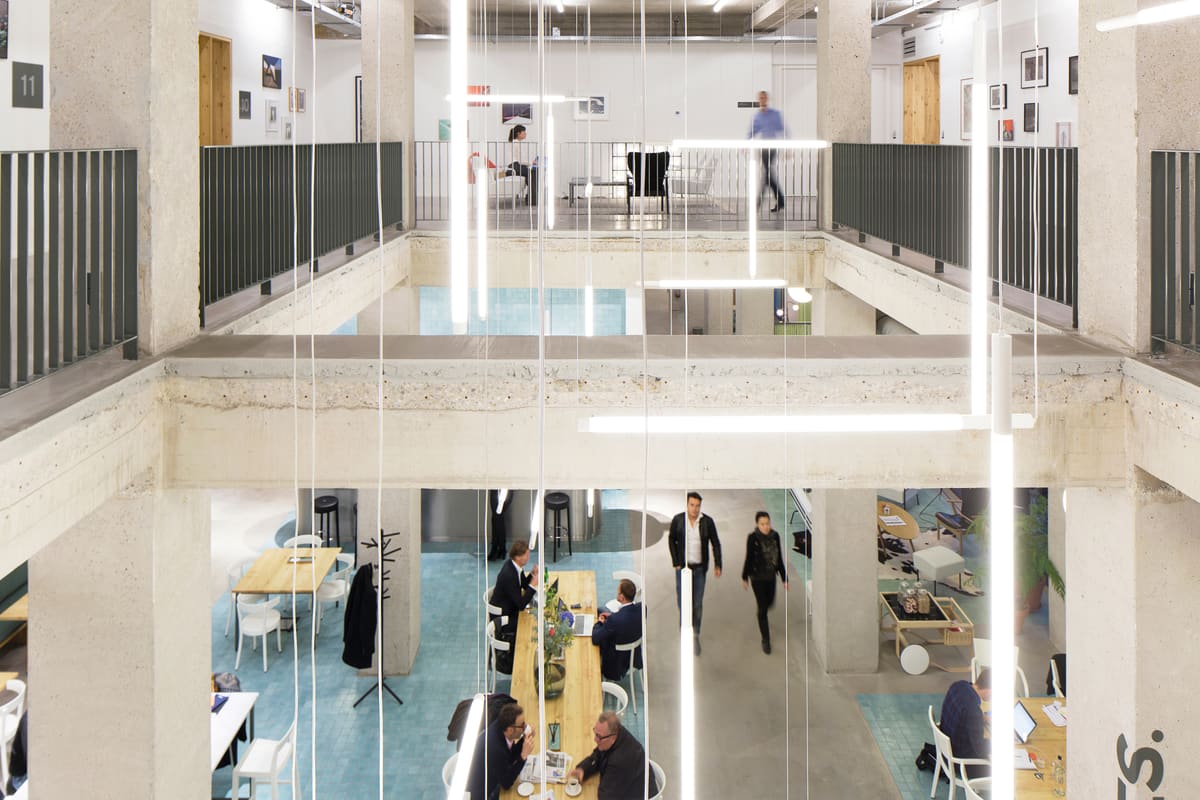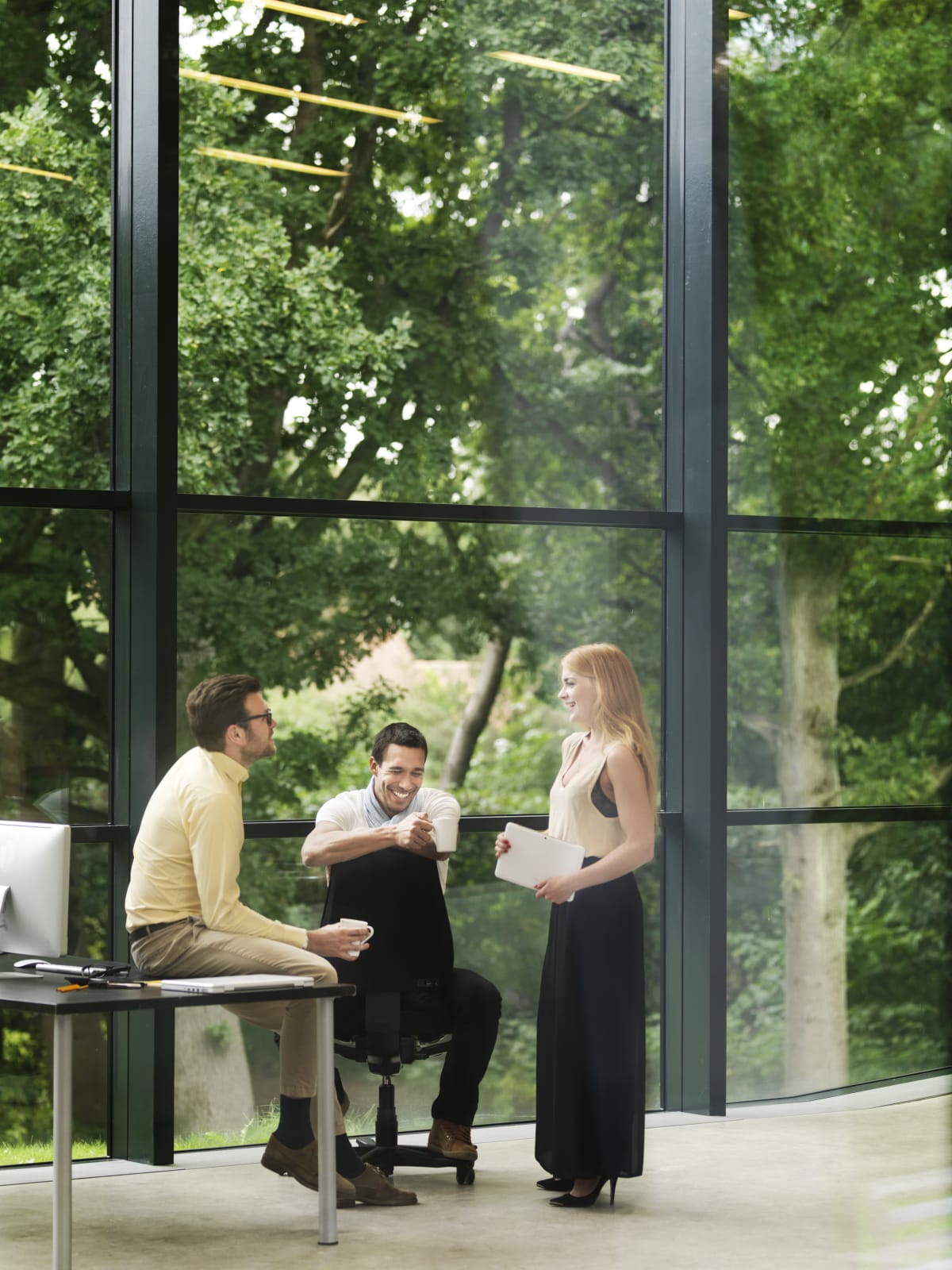Here’s how the global shift towards a hybrid way of working is bringing positive transformation to local communities and creating a blueprint for a greener, more people-centric economy.
Having saved time and energy by cutting out the daily commute, the global workforce is questioning the viability of a return to how things were before – and recent research from IWG found 77% of workers would like to work in a space closer to where they actually live.
In pursuit of a more flexible working culture that strikes up a better work-life balance and supports employee wellbeing, companies are revisiting their office real estate portfolios and exploring how those portfolios match up to a newly distributed workforce. The ripple effect of how and where staff carry out their working lives also has significant socio-economic consequences.
Hybrid working – where employees divide their working hours between a local flexible office space, working from home and their company’s headquarters – was already gaining momentum before the pandemic, but Covid-19 became a catalyst for its widespread adoption.
This is creating a surge in demand for flexible offices and coworking spaces in the suburbs, towns and villages, close to where workers live and socialise.
And this is fuelling the growth of ‘model villages’, where residents have access to all the amenities they need to live and work within close proximity to their own front door.
A recent economic impact study from IWG and Arup explores the connection between the rise in hybrid working and the growth of local economies in three countries: the UK, the US and Germany.
Here, we provide five examples of how a hybrid working model is not only valuable for economic recovery after the pandemic, but also contributes to a more sustainable model for economic growth, benefitting workers, local communities and the planet.
1. Enhanced employee productivity and wellbeing
Companies are experiencing the productivity gains of allowing their teams to work closer to home, rather than commuting to a central headquarters five days a week. Studies have found that having access to local flexible office space as part of a hybrid working set-up increases employee productivity by 2%. This may not sound significant, but it equates to £151m in Gross Value Added (GVA) for businesses in the UK.
What’s more, having the flexibility of choosing to work from home or from a local flexspace location has a positive impact on employee wellbeing, empowering staff to carve out a better work-life balance and creating a more socially sustainable way of working.
2. A wider pool of talent
With hybrid working, companies can cast their net wider when it comes to recruiting the right people for their teams. Rather than requiring talent to relocate to be closer to the HQ, businesses can instead offer the alternative of working from home as well as a local flexible office space close to where they live, which is also near their social circles.
By empowering teams to work from anywhere, businesses can hire from anywhere. This helps not only to create the best teams but also to remove geographical barriers to employment. This, in turn, demonstrates a company’s commitment to equal opportunities and improving social mobility.
3. Increased footfall for suburban businesses
According to the IWG and Arup study, in the United States, some 200,000 white-collar workers will move outside of cities over the coming years. This will generate up to $1.3bn in spending in suburban and rural locations.
Meanwhile, in the UK, IWG expects up to 75,000 full-time workers to relocate from city centres, while the figure for Germany is up to 38,600. The potential for the spending power of this demographic to benefit local retail, food and entertainment outlets is significant and comes as a welcome opportunity to regenerate the high street.
4. Job creation
As new flexible office space locations open up rapidly to meet demand, each location creates fresh employment opportunities for locals. This generates not only jobs associated with the operation of the workspace – such as the front of house team members and community managers – but also among professionals offsite who support its development – such as architects, accountants, designers and other services.
The GVA that hybrid working will create through job creation is forecast at up to £92m annually for the UK and $480m annually for the US.
5. A greener way of working
To reach a city-centre company headquarters, a typical worker in the UK needs to commute for 58 minutes – with 67% travelling by car. In the US, typical commutes are 55 minutes while, in Germany, more than 27% of workers commute for more than an hour per day.
Cutting out the collective carbon footprint of so many former city-centre commuters has huge implications for our planet. While hybrid working still involves meeting at a company headquarters when it’s necessary, it’s about removing the daily journey that was so ingrained in traditional working patterns to the detriment of the wellbeing of employees and to the environment. Instead, hybrid working presents a greener way by removing the expectation for workers to travel beyond their local area every day.
In summary, not only can hybrid working have positive socio-economic impacts, but it also provides an environment for employees to be more productive, improve their work-life balance, maintain human connections and collectively contribute towards the future health of our planet.
Find out how hybrid working can reinvigorate your company’s real estate portfolio and bring positive change to company culture with IWG.






